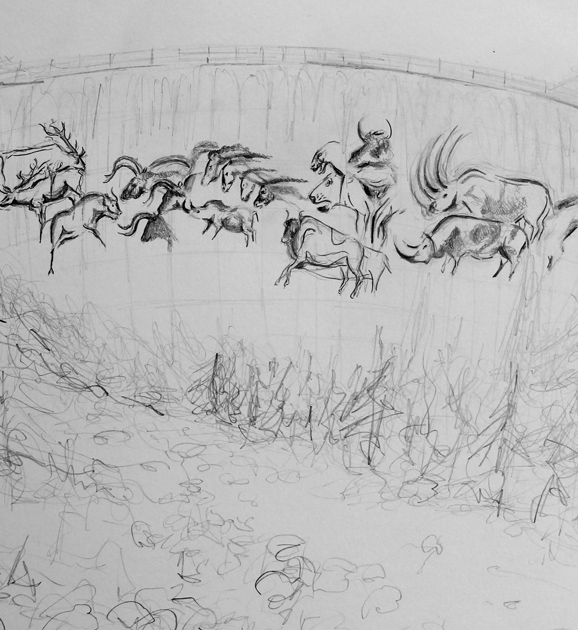
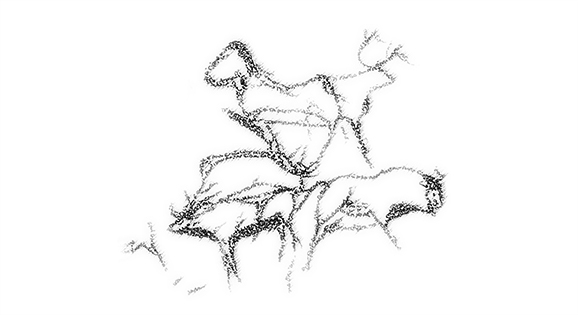
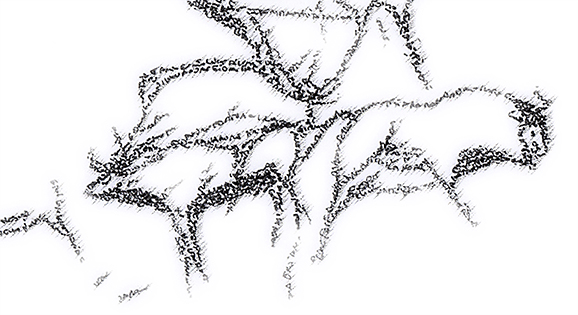
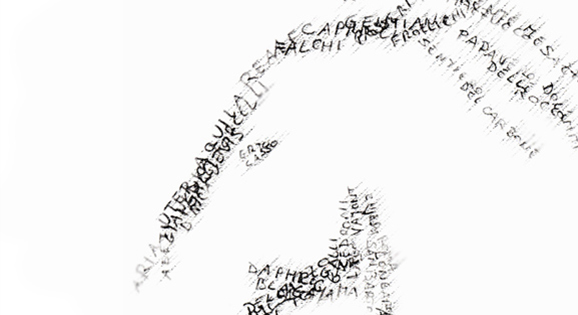
Extraordinarily wonderful mountains intertwine themselves with the memory of an enormous tragedy. In the collective consciousness every thought about these places moves towards a commemoration without return, as if the water that day had destroyed every other perspective. And yet, another way of looking is possible.
Seeing the impossibility of ereasing the horror of what happened, all that is left is standing still, and contemplating, as the Fisher King in The Waste Land by Thomas S. Eliot, with the desert behind his back. After the lapidary Death by water, one waits for the sound of Thunder, of vital water among the rocks.
But this otherness is already there, it is necessary to start again from the origin, to begin a new alphabet.
In 1994 the Chauvet Cave was discovered in France, which contained the first known cave paintings (32.000 years old). In respect to other graffiti they don’t speak about violence, but they speak of beauty, of wonder humans feel when faced by nature, by the other; of the human ability to watch with new eyes, to tell all about groups, relationships, movement, perspective, evolution, love.
The project consists in reproducing in a pictorial way some of the Chauvet graffiti on the side of the dam as a narrative sequence, a linear tale, in collaboration with the researchers who studied them for years.
But the signs will not be human, the hybridation of a machine is going to realize them, imprinting and engraving words, which will compose the images.
The NAMES that will be used are:
- those of the inhabitants of Longarone, Erto and Casso at the moment of the tragedy, both victims and survivors
- those of the volunteers and all the people that came from all over Italy to help
- those of the current inhabitants of Longarone, Erto and Casso
- those of the people who, for different reasons, are intensely involved with these places (including curators, artists, architects, workers…)
- those of places, squares, streets, mountains, rivers, paths, creeks
- those of animal species that inhabit these places
- those of plant life that lives in these places
- those of minerals that make up these places
To realize the artwork a laser printer will be necessary to engrave/print the images (more or less three meters high) composed by words, along the line.
For the operation a scaffolding clasped to the crowning element, hanged down the side, will be used.
–
Montagne di una straordinaria meraviglia s’intersecano con la memoria di una tragedia di proporzioni enormi. Nell’immaginario collettivo ogni pensiero riguardante questi luoghi si dirige verso una commemorazione senza ritorno, come se l’acqua quel giorno avesse spazzato via ogni altra prospettiva.
Eppure altri sguardi sono possibili. Nell’impossibilità di cancellare l’orrore di quanto accaduto, non rimane che restare immobili e contemplare, come il Re Pescatore della Waste Land di Thomas S. Eliot, con il deserto alle spalle. Dopo la lapidaria Death by water, si rimane in attesa del suono del tuono, dell’acqua vitale tra le rocce.
Ma queste alterità sono già presenti, è necessario ripartire dalle origini per iniziare un alfabeto nuovo.
Nel 1994 è stata scoperta la caverna di Chauvet in Francia contenente le prime pitture rupestri (32.000 anni circa). Rispetto ad altri graffiti non parlano di violenza, ma raccontano la bellezza, lo stupore dell’uomo per la natura, per l’altro; la capacità umana di guardare con occhi nuovi, di raccontare il gruppo, le relazioni, il movimento, la prospettiva, l’evoluzione, l’amore.
Il progetto consiste nel riprodurre in modo pittorico alcuni dei graffiti di Chauvet sulla parete della diga come sequenza narrativa, racconto lineare, in collaborazione con alcuni dei ricercatori che li hanno studiati per anni.
Ma i segni non saranno umani, sarà l’ibridazione di una macchina a realizzarli e lo farà incidendo parole, che andranno a comporre le figure.
I NOMI che verranno impiegati sono:
- gli abitanti di Longarone, Erto e Casso al momento della tragedia, sia le vittime che i sopravvissuti
- i volontari e tutti coloro che sono corsi in aiuto da ogni parte d’Italia
- gli abitanti attuali di Longarone, Erto e Casso
- le persone che per diversi motivi si sono relazionate in modo intenso con questi luoghi (compresi curatori, artisti, architetti, muratori…)
- i luoghi, le strade, le piazze, i monti, i fiumi, i sentieri, i ruscelli
- le specie animali che popolano questi luoghi
- le specie vegetali che vivono in questi luoghi
- i minerali che compongono questi luoghi
Per realizzare l’opera sarà necessaria una stampante laser che inciderà le immagini (alte circa tre metri) composte da parole, lungo la linea.
Per l’operazione servirà una impalcatura che verrà agganciata al coronamento e fatta scendere lungo la parete.
One Response to tiziana pers
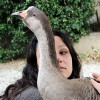
 Trivignano Udinese
Trivignano Udinese
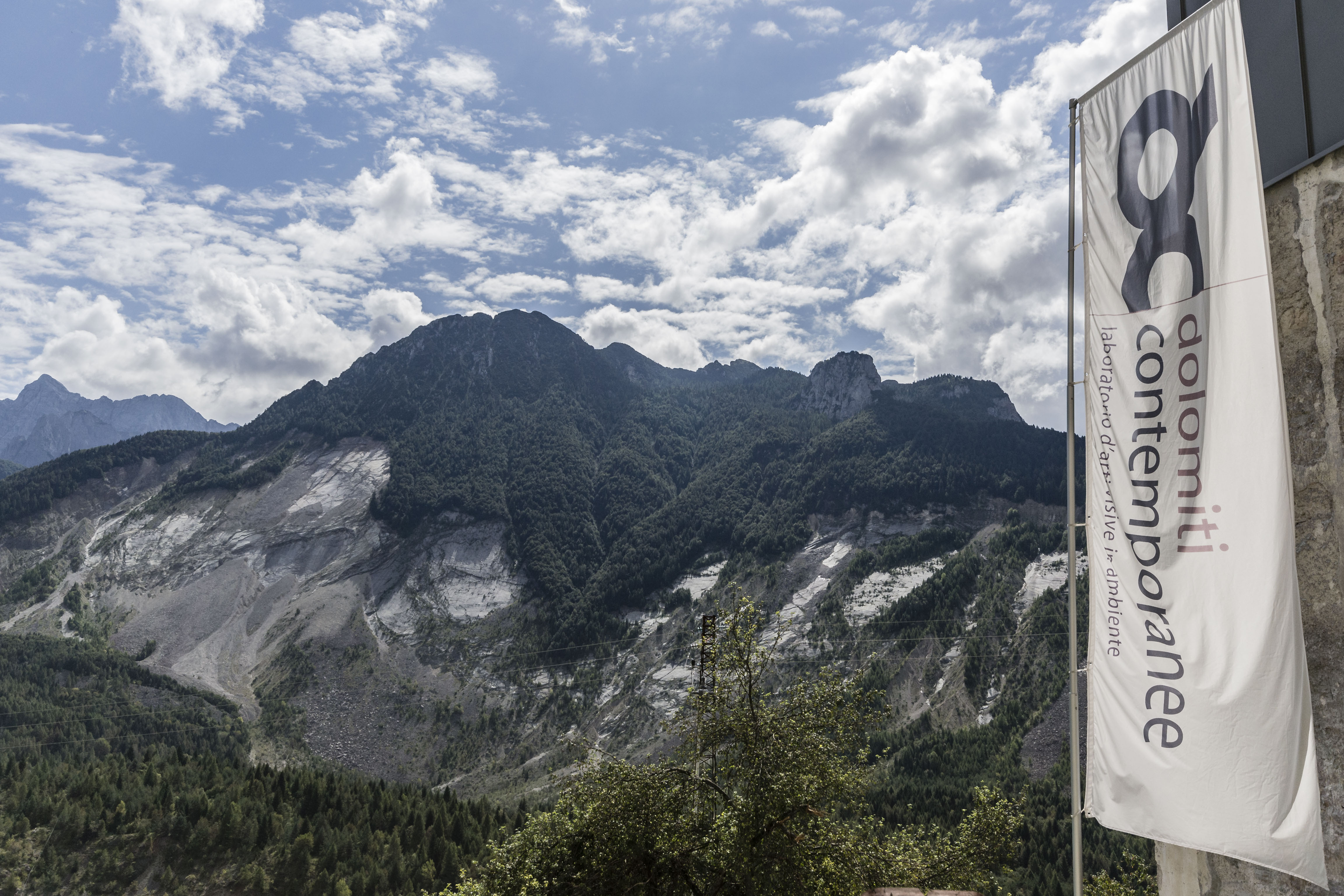
Tuesday, June 15th 2021, 2 – 4 PM, webinar panel:
two calls for vajont: fase _restart.
Vajont: [...]





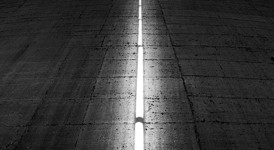
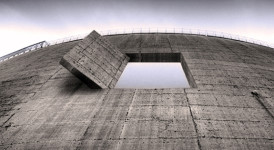
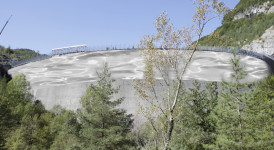

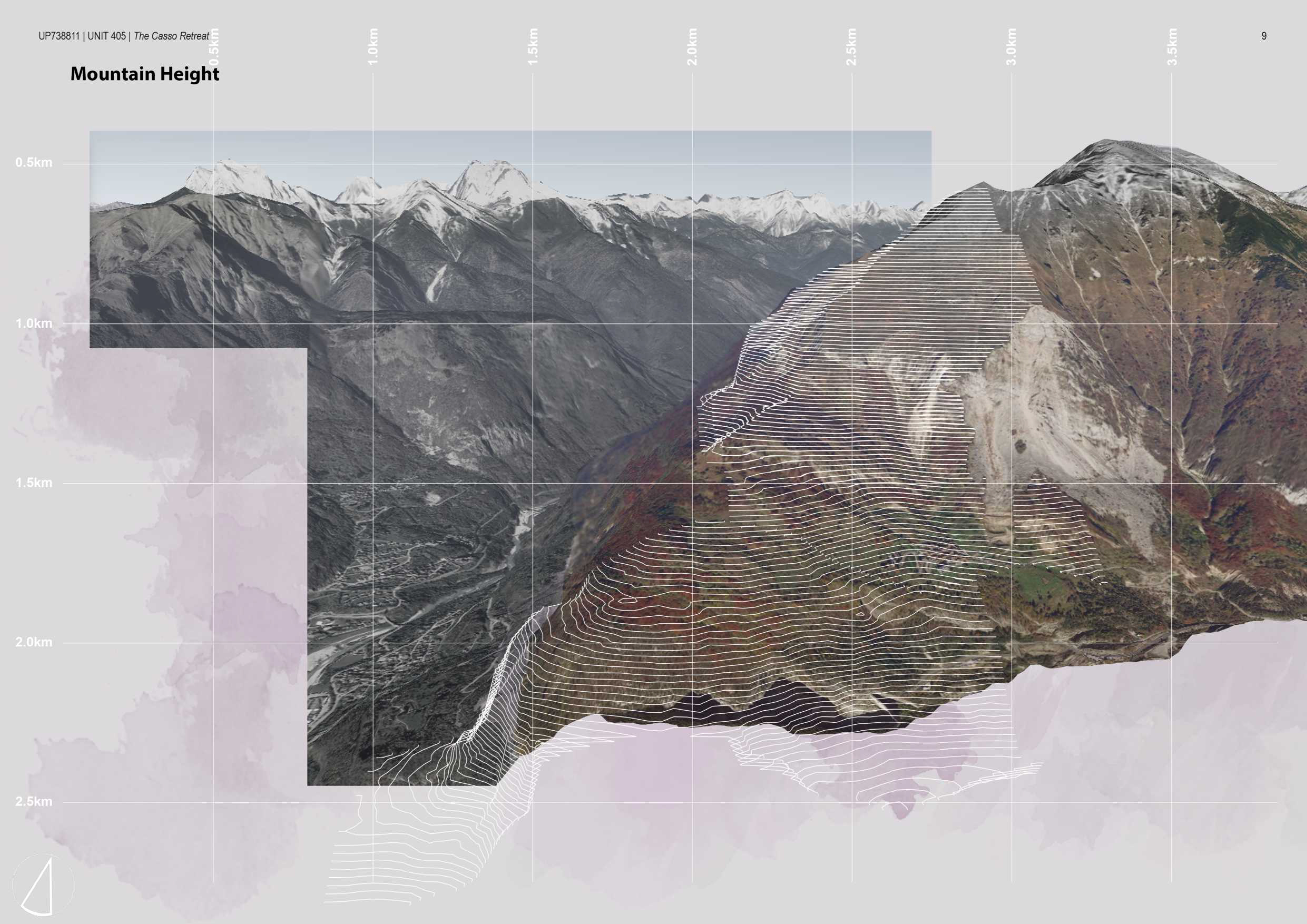








Bellissimo progetto!